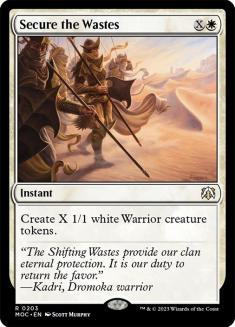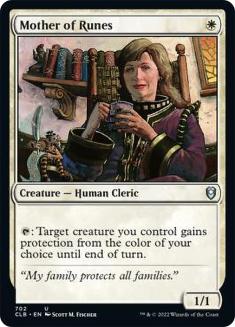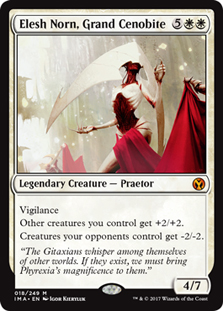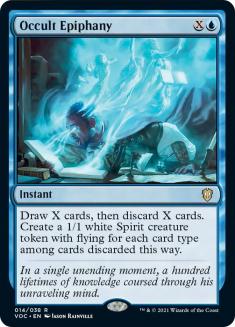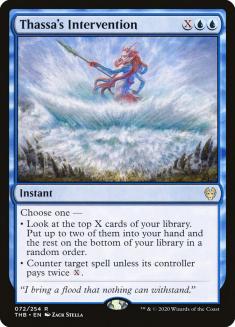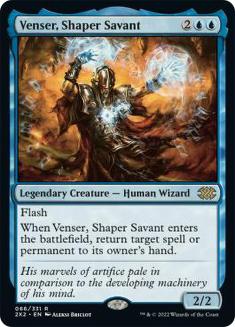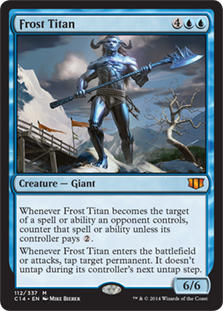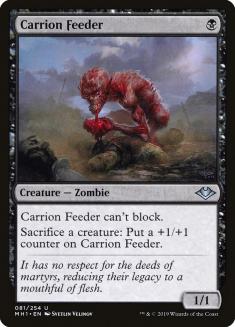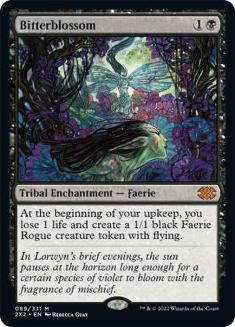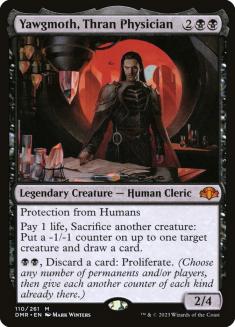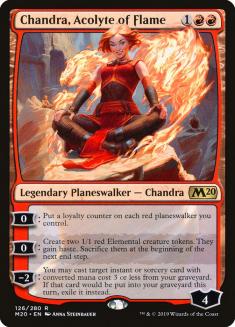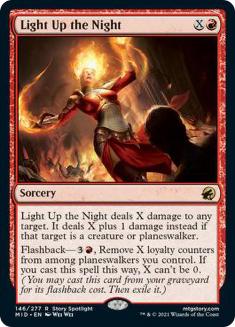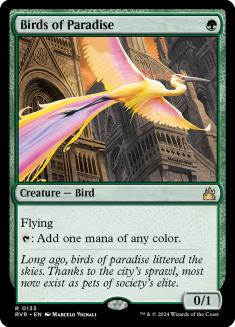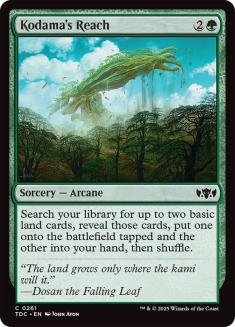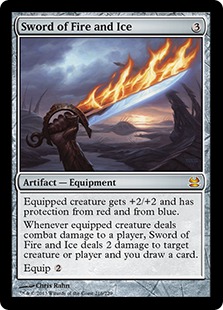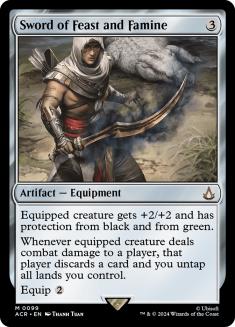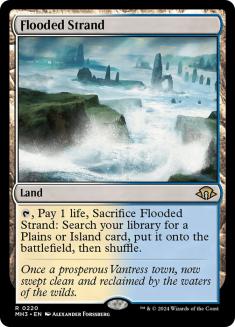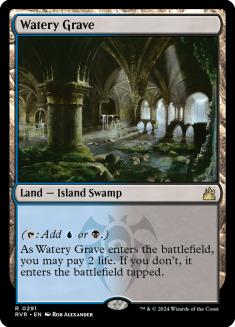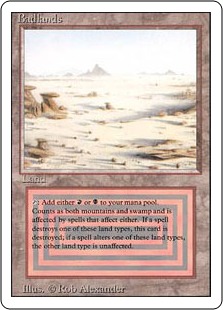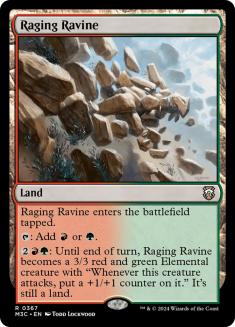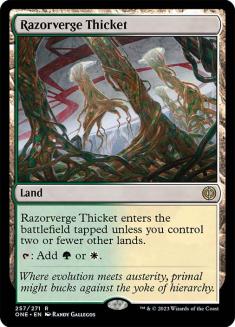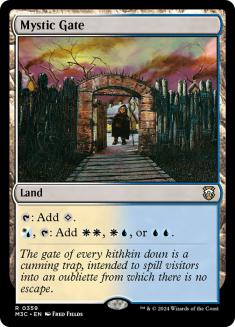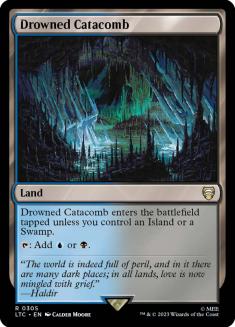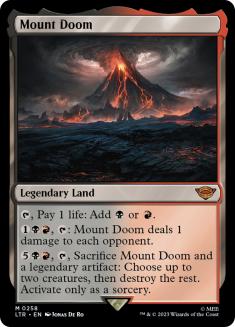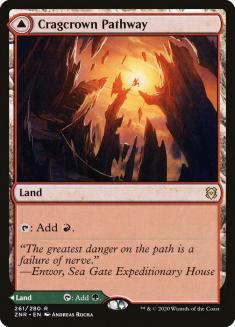Howdy, gamers! I’ve written about quite a lot of Cubes these last couple of years, and through my writing, regular readers have no doubt gained an idea for the sorts of things that I value in Cube design. That said, all of the Cubes that I’ve written on have had very specific aesthetics, and most of them have been of the Twobert variety, which can’t support a full eight-player draft.
It occurred to me a while back that I’ve never maintained an “ordinary” Cube, for lack of a better word, something sized for a full draft table that is easy enough to pick up and play if you’re familiar with Magic broadly. I’ve seen countless Cubes since I started engaging with the hobby, but lately the ones that can be described simply as “a Cube that belongs to a person” have caught my eye the most. So I set out to design an “Overturfian Cube”.
The PG Cube
The list of cards that I would like to Cube with but don’t currently have a home for is long, so the first order of business was to narrow my list of potential inclusions somehow. In the world of “good cards” Cubes, this mostly means determining the approximate power level. I think powered Cubes are a bit overdone at this point, and scaling back only slightly leaves too many cards like Gaea’s Cradle and Grim Monolith that really limit the range of cards that you can meaningfully include in the Cube. I do have an appreciation for a lot of cards that are on the strong side, though, so I set my sights on “a bit less powerful than Legacy Cube”.
At some point, I had the thought that the ideal reaction to a given card in the Cube was for the opponent to raise their eyebrows and give you a, “That’s pretty good.” I was also thinking about the scale of power levels, and if we say Vintage Cube is rated R and Legacy Cube is PG-13, then the next rung down is PG, and I’ve been referring to this project as The PG Cube ever since. If that’s all you need to know, then feel free to jump over to my list on Cube Cobra, though I have plenty more to say!
Twobert Evolution
A lot of the bones from the Cube were borrowed directly from the original Twobert and then just trying to flesh out areas that it was natural for the Cube to grow into. I knew from the start that I didn’t want any heavy combo support, but that I did want to facilitate some flashy plays and allow for the occasional deterministic win. As I ironed out the power level, I found myself making cuts in every direction: things that were too strong, things that were too weak, things that didn’t have a home, and things that needed to go to help something else find a home. The environment played really well starting from the first draft, and I’m incredibly happy with where it sits today.
A lot of the list will be cards that you’re very used to seeing in Cube draft, and I don’t want to waste your time telling you that Preordain is strong. Instead, I’ll break the Cube down by color in terms of the technical vision behind the design of that color and highlight my favorite cards featured here that you maybe don’t see much in other environments. I’ll also touch on some notable omissions, some cards that perform differently here from what you might be used to seeing, and some cards that I’m keeping an eye on as possible cuts. Let’s dig in!
White
I’ll be real here: there’s only so much you can do with white. This column is mostly the usual suspects of white aggro and control decks, with a little spice where I could fit it. Mana Tithe is a darling of mine that I’ve looked at more than once to trim, but I’m hopeful that the addition of Reprieve allows the card to really perform with that slight increase in redundancy. The standout to me as far as cards that you don’t usually see in environments like this is Secure the Wastes.
I think that the blowout potential of a card like Settle the Wreckage catches the eye of the average player far more, but I’m a huge fan of workhorse cards that give the player casting the spell more agency. Secure the Wastes has a decent amount of blowout potential when it comes to blocking while also offering sacrifice fodder and just general beatdowns. It’s the white card in the Cube that I’m most attached to relative to how attached a person might suspect I am to it.
Determining which cards to feature at the top of white’s power band was a little tough, because many of white’s most powerful spells lead to games that I find quite boring. I hemmed and hawed a little bit on Mother of Runes, Solitude, and Elesh Norn, Grand Cenobite before acknowledging that I had pushed all of the other colors to points where I really need to give white tools like these.
The power level is high enough in the Cube that Mother of Runes has felt more natural than I’d have expected. I’ve also juiced the aggressive decks enough that I haven’t seen Solitude be the massive blowout that I feared it might regularly be in an environment with such a heavy creature focus. Elesh Norn is a relatively recent addition that I largely decided to try because I have a copy signed by a close friend that I’ve been wanting a home for for a long time. At seven mana, the card is eminently castable in this environment, but there’s enough other big stuff going on that I don’t expect it to dominate in every draft. That said, it is the white card that I’m keeping the closest eye on.
Blue
There’s quite a lot more to customize when it comes to blue, and as you can see. I didn’t bother trying to shoehorn any aggressive cards into my blue column. It’s all counters, card selection, and haymakers here!
I don’t actually have any blue cards on my watch list, with blue not especially standing out as more powerful than the other colors and each individual blue card showing up and being pretty good! There are a few oddballs here that I’d like to take the opportunity to discuss, though.
Occult Epiphany is a relatively obscure card, given its release in a Commander product while being a card better geared for heads-up play without being broken. Delirium has support as a minor theme in the Cube, and most everything that I like about Secure the Wastes, I tend to also like about Occult Epiphany, with the former being better for large amounts of mana and the latter being better for lower amounts. Archmage’s Charm is a bit difficult to cast, but in a heavily blue deck it’s awesome, either starting on Turn 3 or when you can double-spell on a later turn. Thassa’s Intervention loses out in favor of more efficient draw spells in most Cubes, but I absolutely love the card for its modality.
Something to note about this Cube is that I don’t shy away from mana denial, as that has always been an aspect of the game for me since I started playing. Tamiyo, the Moon Sage doesn’t show up in a ton of Cubes these days, but I’m happy to give it a home largely for the ability to tap down lands. Venser, Shaper Savant; Riftwing Cloudskate; Frost Titan; and the Clones featured are also largely present to facilitate this aspect of the Cube, all while masquerading as tools for more honorable ends.
A notable omission is that I don’t support any Control Magic effects beyond the occasional Archmage’s Charm stealing a one-drop. I find that these effects generate some of the least interesting decks and games, and are a significant aspect of what allows blue to overperform relative to the other colors in a lot of Cubes. Forcing players to establish a battlefield position using their own cards helps to prevent the sort of do-nothing control decks that just answer all of your cards until they see one worthy of stealing to beat you with. These effects are so commonly featured in Cube that it’s clear that there is an audience for them, but with how deep the well of powerful blue cards is and with how impactful these effects can often be, I’m a big advocate of not featuring them.
I am also somewhat weary of extra-turn effects, but I’m glad that I convinced myself to feature a solitary Time Warp in this Cube. It does require you to develop your battlefield to be especially meaningful, so it’s not oppressive on its own, and the inclusion of just one extra-turn effect significantly expands the range of things that can happen in a game. Not to mention that Time Warp is one of the few slots in the Cube that opens up the potential to pull off a game-winning combo, which is very welcome in small doses. The aforementioned Tamiyo, the Moon Sage and some combinations with Eternal Witness are the primary ways to accomplish this.
Black
Black poses some significant questions in Cube design when it comes to power level. Making black relevant, barring just jamming all of its most powerful cards, has proven incredibly difficult in Cubes of all shapes and sizes. What I landed on was including a sampling of the most powerful controlling black cards and going heavy on a Sacrifice theme. The mana of the Cube is designed to make two-color manabases really strong, and this theme allows black to play especially well with white and red, which goes a long way towards making sure that black is represented in decks.
To make sure that I was giving players enough incentive to pursue black Sacrifice decks, I juiced them with the addition of Yawgmoth, Thran Physician. The impact that Yawgmoth can have relative to its mana cost is concerning, and it’s the one black card that I’m really keeping an eye on, but so far the power level of everything else has proven high enough to keep Yawgmoth more or less in check while still being an exciting avenue to explore. So, you could say that Yawgmoth is working out pretty well for now.
I considered cards like Demonic and Vampiric Tutor, but ultimately they just feel out of place here. I’d rather encourage players to draft decks full of cards that play well with each other than to try to draft something that plays the same every game, and the level of redundancy offered by efficient tutors just didn’t mesh well with my vision.
I also have a strong distaste for Reanimator in most Cubes, and there was no way I was going to heavily facilitate those strategies here. The compromise that I made was to slot in Liliana, Death’s Majesty, which is a solid value card which can cheat the small sampling of large creatures onto the battlefield if that’s what you really want to get up to, and I’ve been happy with this decision as far as offering a taste of Reanimator without fully supporting such a groan-inducing archetype.
Red
I’d argue that red is a bit more customizable in Cubes of this power level than white, though I did mostly keep things to beatdown and midrange cards with some support for Sacrifice decks. I decided to eschew one-note cards like Goblin Guide and Sulfuric Vortex largely in favor of pushing players to play two or more colors more often than not, and because I expect a relatively high number of aggressive mirrors where those cards don’t really shine. Embercleave subtly pushes players towards playing Boros over mono-red, with Stoneforge Mystic hanging around to sweeten the pot.
I’ve elected to offer some light support for prowess, but I don’t go overboard there. All of the creatures and spells for that style of deck are at rates where you’d generally play them in any aggressive shell. I initially had more of a “planeswalkers matter” theme slotted into red, but the number of planeswalkers and cards that support this only decreased over time as I pushed the Cube more in the direction where each card was more generically playable. Chandra, Acolyte of Flame and Light Up the Night are the two holdovers from this experiment, with both offering enough in other areas while maintaining some explosive potential when specifically explored that I like having them around.
There’s really nothing in red that I’m concerned about on power level here. I’ve cast some game-ending Inferno Titans to be sure, but that’s a feature. The card that I’m certain I’ll replace at some point is Sweltering Suns. I thought I wanted some kind of sweeper in red, with Pyroclasm being a card that I neither consider maindeckable nor fun. The cycling on Sweltering Suns made it appealing, but this really just isn’t an effect that the red column in this Cube cares all that much about.
Green
The green column in this Cube, and really in most higher-powered Cubes, is essentially what you would see in Vintage or Legacy Cube with the most powerful five-ish cards cut out. I already mentioned that Gaea’s Cradle is more explosive than I what I want to get up to here, and Rofellos, Llanowar Emissary and Natural Order are unsatisfying for much the same reason. This also leaves less room for a card like Deranged Hermit, but cards like that are worth considering here if I decide I want to incentivize Sacrifice decks to dip more into green.
This Cube is generally designed to encourage players to play two-plus colors, and this is loudest in green. As you often see, a lot of what green has going on makes color-fixing easy in addition to the fact that the powerful draws to play mono-green are largely absent. It’s certainly in range to draft three-color nongreen decks in this Cube, but the four-color decks will basically always be green, and the five-color decks are likely to be heavily green.
I’m colder on Primeval Titan than most in most Cubes, but this is an environment where Primeval Titan actually does a lot of work. In addition to being awesome with Field of the Dead, this Cube requires you to work a little to get up to Craterhoof Behemoth mana. I’ve had Craterhoof the list from the start, though with the powerful ramp cards that I’ve decided to eschew, it hasn’t shown up very often. I like the idea of Craterhoof only showing up sometimes, but I do want it to actually show up.
I believe that I finally have the Cube at a point where this should happen, with Nissa, Who Shakes the World being the most significant role-player in that regard, and Magus of the Order, which enables alternatives like Atraxa, Grand Unifier as creatures to find offering good reasons to explore the big mana route.
The green card on my watch list is a longtime favorite of mine, Plow Under. A lot of players don’t respect a good Plow Under these days, but the card is absolutely backbreaking when it does its thing. As I said, I do like featuring some mana denial and Plow Under is a favorite of mine, but I can see it getting old and will move on if and when the time comes.
Gold
Most of the gold column here consists of the usual suspects in two-color pairs with a little support for four- and five-color decks just to offer something to the players who can’t help but draft every land that they see. The biggest opportunity for improvement here is unsurprisingly the Selesnya cards, but once again, there’s only so much you can do there. I think King Darien XLVIII is neat, but I get that a three-mana creature isn’t something that either green or white needs to explore playing a second color to find.
The cards in the list that I don’t see much in other Cubes these days that have performed well here that I absolutely adore are Find // Finality, Ajani Vengeant, and Kiora, the Crashing Wave. Find // Finality is a value card that loses a lot of its luster as you move into Cubes that facilitate a lot of combo. Kiora is easily outclassed at higher power levels while still being a totally respectable card in its own right. I thought about just putting Nahiri, the Harbinger in the Cube to help cheat the large creatures onto the battlefield, but it’s just not a card that you’d ever play in a Boros deck. Ajani Veangeant is another piece of mana denial that is just pretty good!
The gold card on my watch list, as you might have guessed, is Wrenn and Six. There’s no Strip Mine in this Cube, but the incentives of the Cube make Wasteland plenty good. Both cards are contested enough that they shouldn’t come together too often, but I don’t know how many times I could see them played together and continue to support both. Given my status as a mana denial apologist, it would certainly be Wrenn getting the axe. That all said, absent looping Wastelands, Wrenn has seemed like an appropriate fit for the Cube otherwise. Perhaps Gruul being among the least inviting color pairs does a lot to make the card feel more reasonable than it is.
Colorless
The colorless column is pretty short here, with the idea being to feature cards that you would realistically play in any color of deck. I feature a small sampling of two-mana rocks, though only ones that tap for colorless mana so as not to detract from green as the mana-fixing color.
I decided to try Emrakul, the Promised End to test the ceiling on the delirium support, and I’ve been pleasantly surprised to see the card only show up some of the time, which is my intention for the top-end cards in the Cube. Similarly, Ugin, the Spirit Dragon is quite hard to cast at eight mana, while also increasing the diversity of effects you can see in the late-game. I’m really happy with what these cards add to the environment.
I was a little cold on adding protection Swords to the Cube, but ultimately these are the cards that will push a lot of players who are indifferent about playing aggressive decks to happily cast some creatures. I don’t love protection, but they’ve hardly been oppressive.
There’s also a nice spread of cheap artifacts to find with Urza’s Saga in the Cube, and making Urza’s Saga into a modestly powerful card was a goal of mine that I believe I’ve achieved here. Chrome Mox is a relatively recent addition that I’m keeping an eye on. The cost of pitching a card is significant, but fast mana is broken.
Lands
Finally, we come to the lands. Most of this column is mana-fixing with a couple of utility lands to round things out. For complete cycles we have fetchlands, shocklands, dual lands, creature-lands, and fastlands.
After that comes one asymmetrical cycle. I have all six Horizon lands, which leaves four friendly pairs to figure out. For a while I just included four Pathways, but I’m not huge on that cycle, and Mount Doom offered something that I liked more than just playing painlands.
With its printing, I decided to start getting quirky with the remaining slots, trying Mystic Gate to increase Archmage’s Charm’s castability among other things, and Drowned Catacomb as a solid untapped Dimir land that helps with the many cards that Dimir decks like to cast at sorcery speed. I stuck with the Gruul Pathway, partly because Pathways are nice for Field of the Dead, but I could see just slotting in Karplusan Forest if I end up finding the Pathway particularly irritating.
I’ve already touched on Field of the Dead, Urza’s Saga, and Wasteland, which add significant texture to decks from the land column. Mutavault and Mishra’s Factory are also nice supplements to aggressive strategies. I’m on the fence about Rishadan Port, which is perhaps pushing the number of colorless lands that are desirable in a Cube where the aggressive decks tend to play more than one color. If I get my hands on a copy of The One Ring, that’s a swap that I’m reasonably likely to make.
The mana here makes two-color manabases strong, three-color manabases stable, and four- and five-color manabases possible. I played one draft with slowlands as an extra cycle, but that level of mana-fixing made drafting four colors somewhat trivial, which I consider undesirable. The current spread has successfully facilitated consistent two-color aggressive decks and five-color decks that can play engaging games against each other, and that’s exactly where I want to be.
Over the last couple of years, I’ve watched a number of my close friends become less invested in Magic, which has fueled my desire to build a relatively low-context Cube comprised of cards that generally justify themselves. Doing so while eschewing the elements of high-power Cubes that lead to lopsided games has been a very satisfying exercise. If you’re looking to play pretty good games with pretty good cards, then the PG Cube comes highly recommended!


